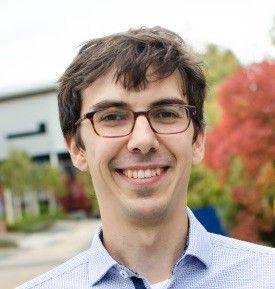Q&A with Professor Bartomeu Monserrat, Fellow in Physics

Professor Bartomeu Monserrat, Fellow in Physics at Robinson, answers our questions on his bid to make science more accessible to all.
Bartomeu has made it his mission to reduce barriers to learning by utilising the power of social media. As such, he created @ProfessorMdoesScience with co-host Dr Mireia Crispin, Assistant Professor at the Department of Oncology at Cambridge University (who also has a background in physics). Together, they create short (5-25 minute) videos covering quantum mechanics from the basics to Master’s and PhD level topics.
Q: Why did you create the ProfessorMdoesScience YouTube Channel?
Bartomoeu: The YouTube channel came about quite organically. It started as a supplement to flipped-classroom teaching, where students watch short video lectures in advance and use class time for interactive discussions and problem solving. I began making concise, focused videos on key quantum mechanics topics to help my students prepare. But the material resonated far beyond Cambridge. The channel now reaches learners around the world with over 25,000 active students and over 1,000 views per day.
Q: What topics do you cover on YouTube?
Bartomeu: The content ranges from fundamental concepts like wavefunctions and the uncertainty principle to more advanced topics, including the quantum origins of chemistry and the behaviour of materials at the atomic scale. It's been remarkable to see how far this content travels: I have now taught more students online than I could ever hope to reach through traditional teaching over a regular 35+ year career. This experience has highlighted for me the extraordinary potential of digital platforms to widen access and complement in-person learning.
Q: Robinson has been your academic home for well over a decade, first as a PhD student, now as a Fellow in Physics. How has Robinson influenced/supported your development?
Bartomeu: After almost 15 years at Robinson, the College continues to shape how I teach, research, and think about education at Cambridge and beyond. That mutual growth, being supported while also being trusted to challenge and change, has defined my relationship with the College. It is exactly that combination of openness and grounding that makes Robinson so special. This kind of reciprocal development is not just a personal experience, it is something deeply embedded in the College’s identity, and what makes it such a genuine and forward-looking academic community.
Q: What makes the Cambridge collegiate ecosystem so special?
Bartomeu: Although I was not an undergraduate at Cambridge, I quickly came to appreciate the distinctive power of the supervision system. It offers a level of individualised engagement that is rare in higher education: the ability to tailor discussions to a student’s specific background, interests, and challenges. That kind of flexibility is especially valuable in a subject like quantum mechanics, which is conceptually abstract and mathematically demanding, and which I have taught for years. Students come to it with diverse strengths, some with a strong grasp of the maths, others with more physical intuition, and being able to adapt teaching accordingly makes a real difference.
Q: Tell us about the link between your research and teaching?
Bartomeu: My teaching is closely intertwined with my research, which focuses on using high-performance computing to solve the equations of quantum mechanics to understand and design complex materials. I lead a team of around 15 postdocs, PhD students, and master’s students in developing computational models that predict the properties of new materials long before they are made in the lab. These materials include superconductors, semiconductors, and topological materials, with potential applications ranging from solar cells and LEDs to low-power electronic devices that could help meet future energy demands. We work closely with a range of industrial and governmental partners, including Samsung, Rolls Royce, and the Nuclear Decommissioning Authority. These collaborations ensure that our theoretical models can help inform real-world technologies, guiding the design of materials for specific needs.
One of the most satisfying aspects of my role is helping students connect what they are learning in quantum mechanics lectures to the research we’re doing at the cutting edge of the field. Being able to show that the same mathematical tools they are studying underpin the design of next-generation materials helps make the subject come alive and often inspires students to pursue research themselves, be it in academia or industry.
To find out more about Bartomeu’s work and his journey from PhD student to Fellow at Robinson, take a look at Bin Brook magazine.